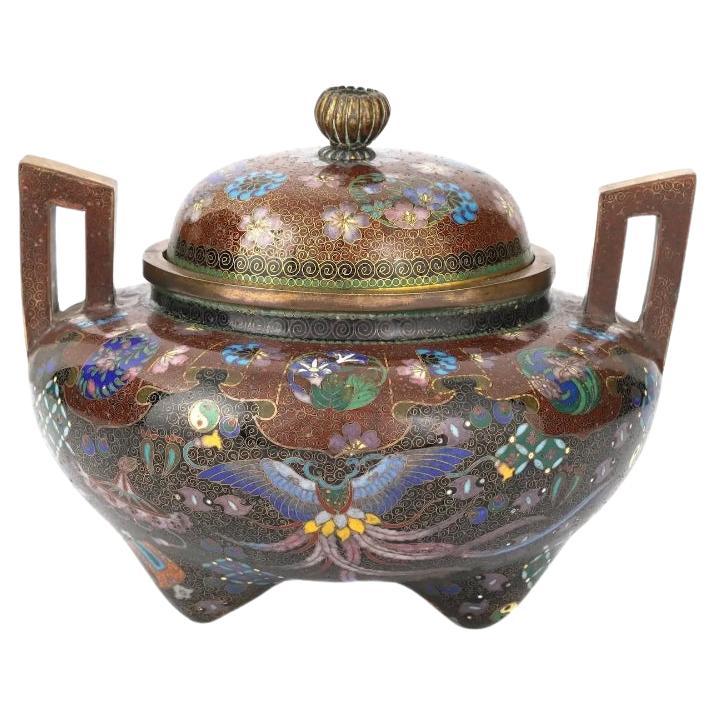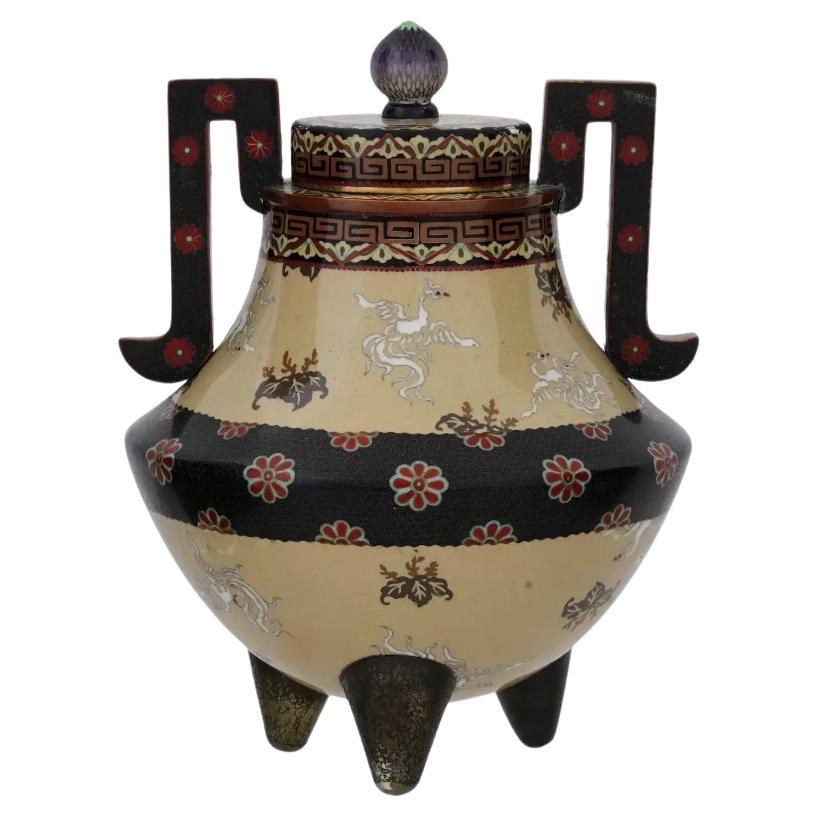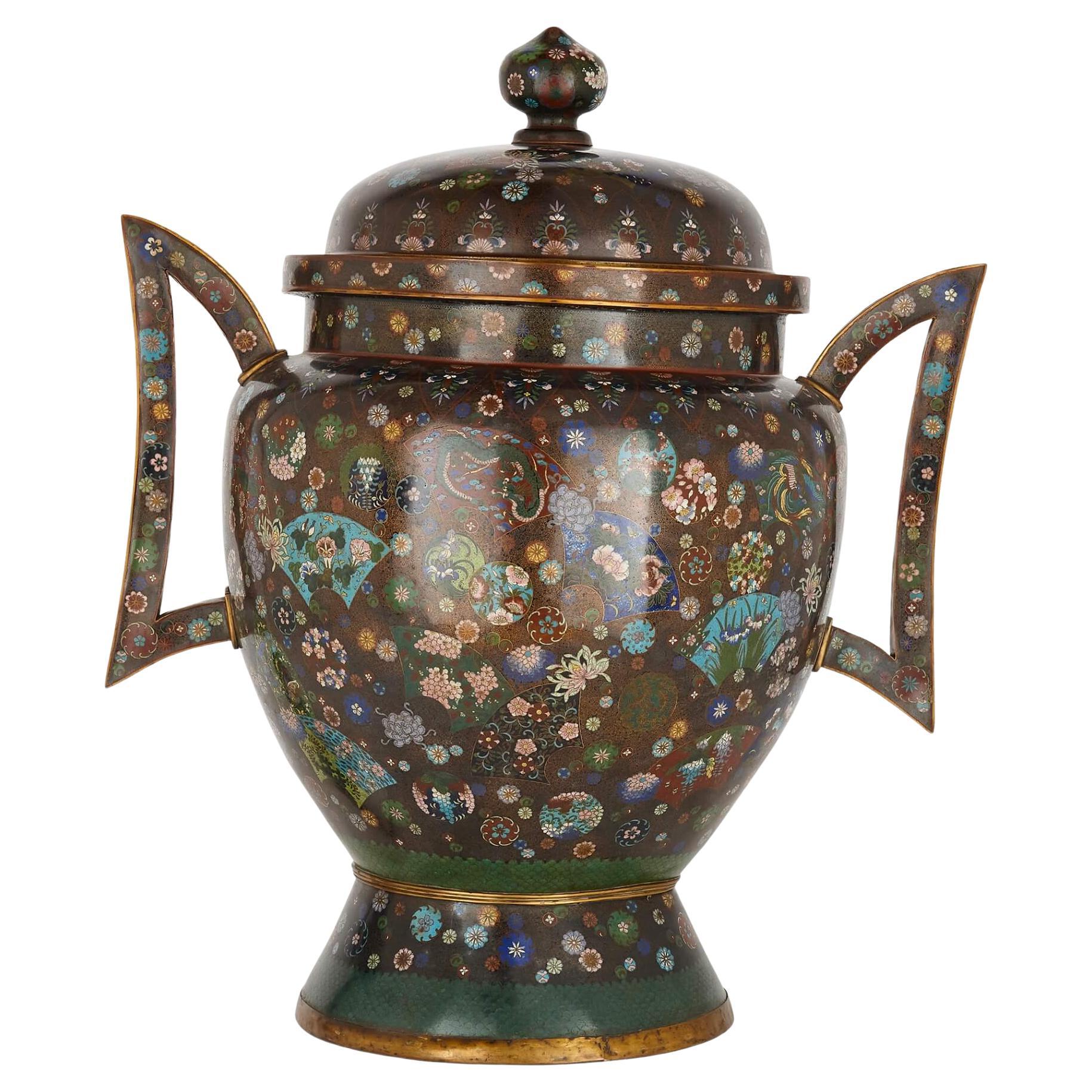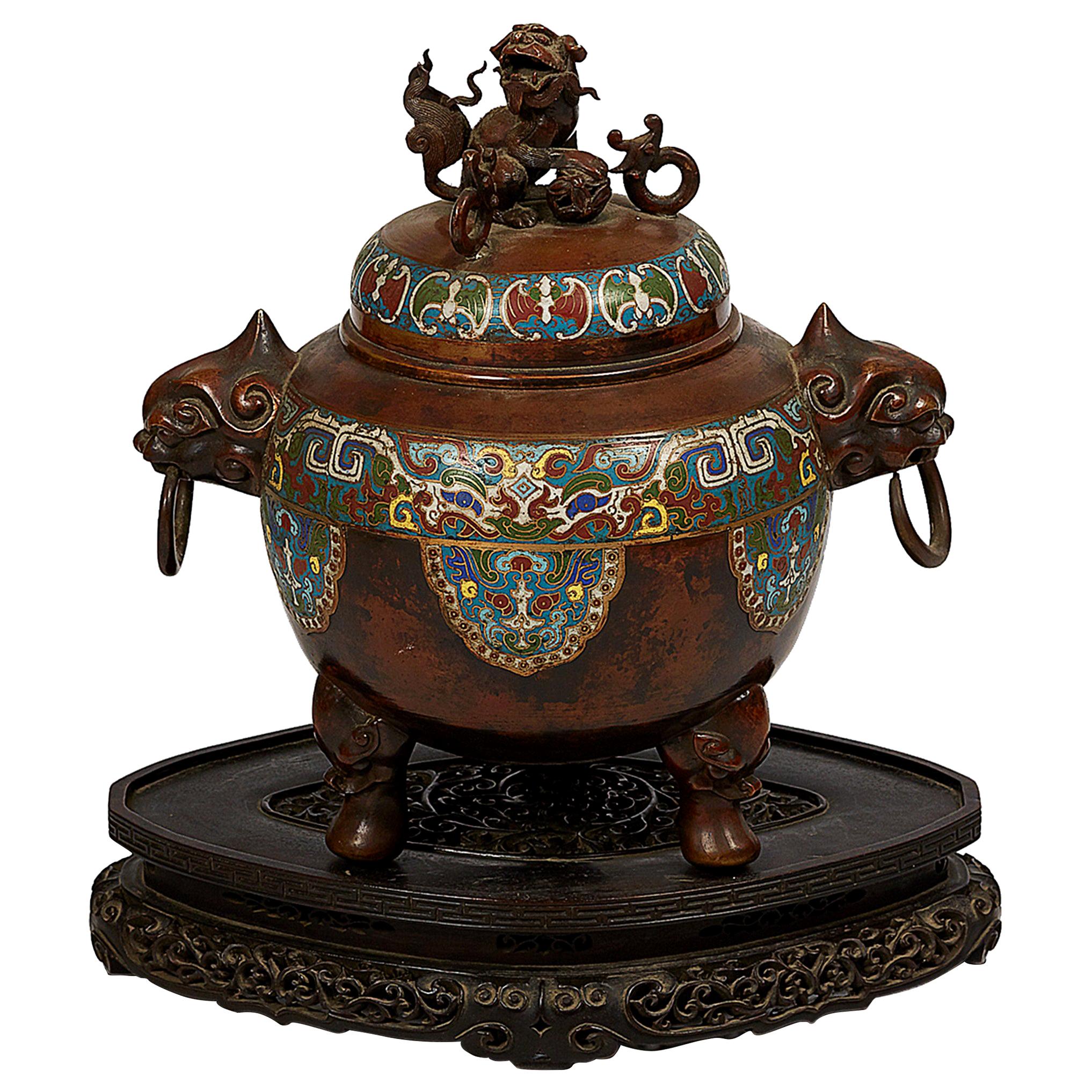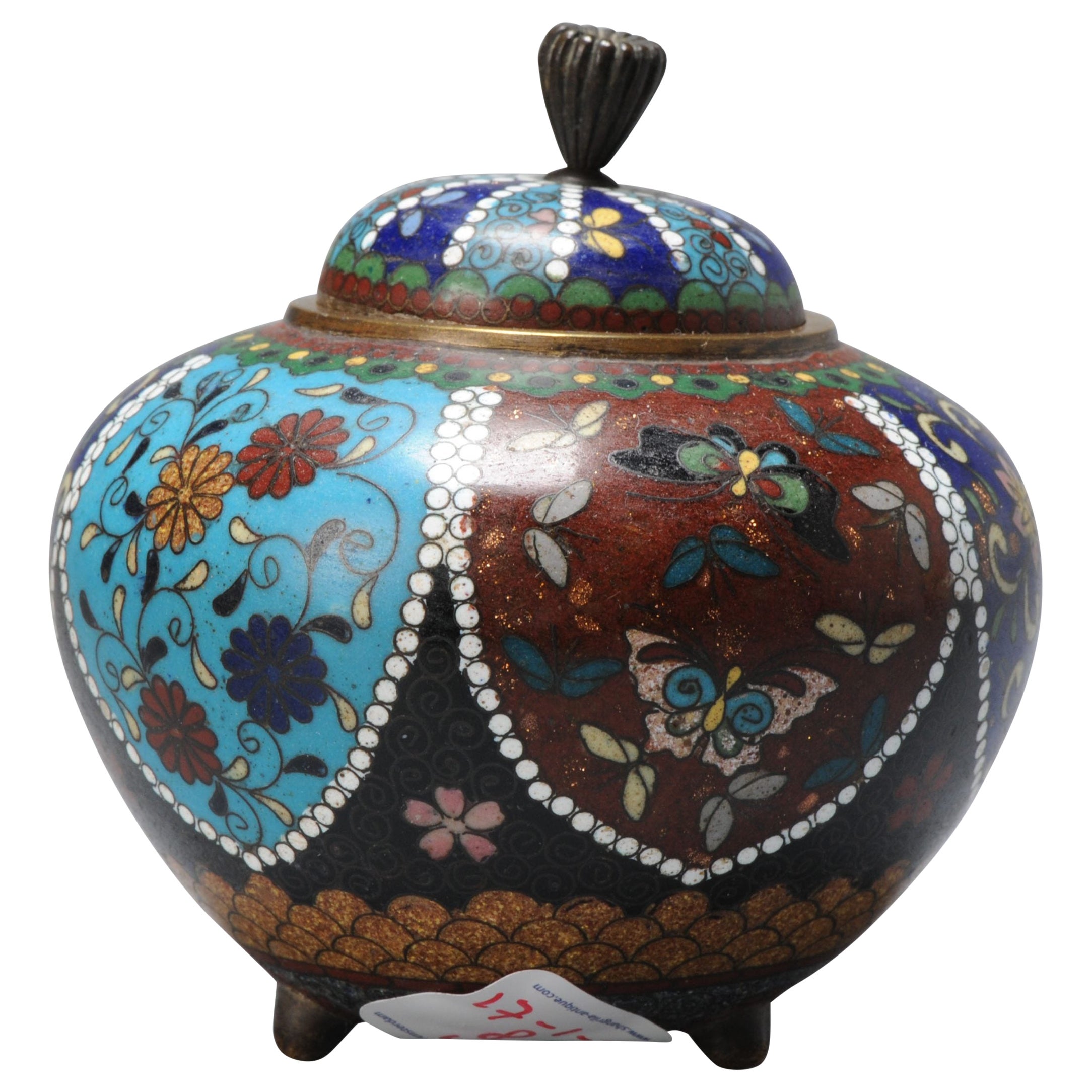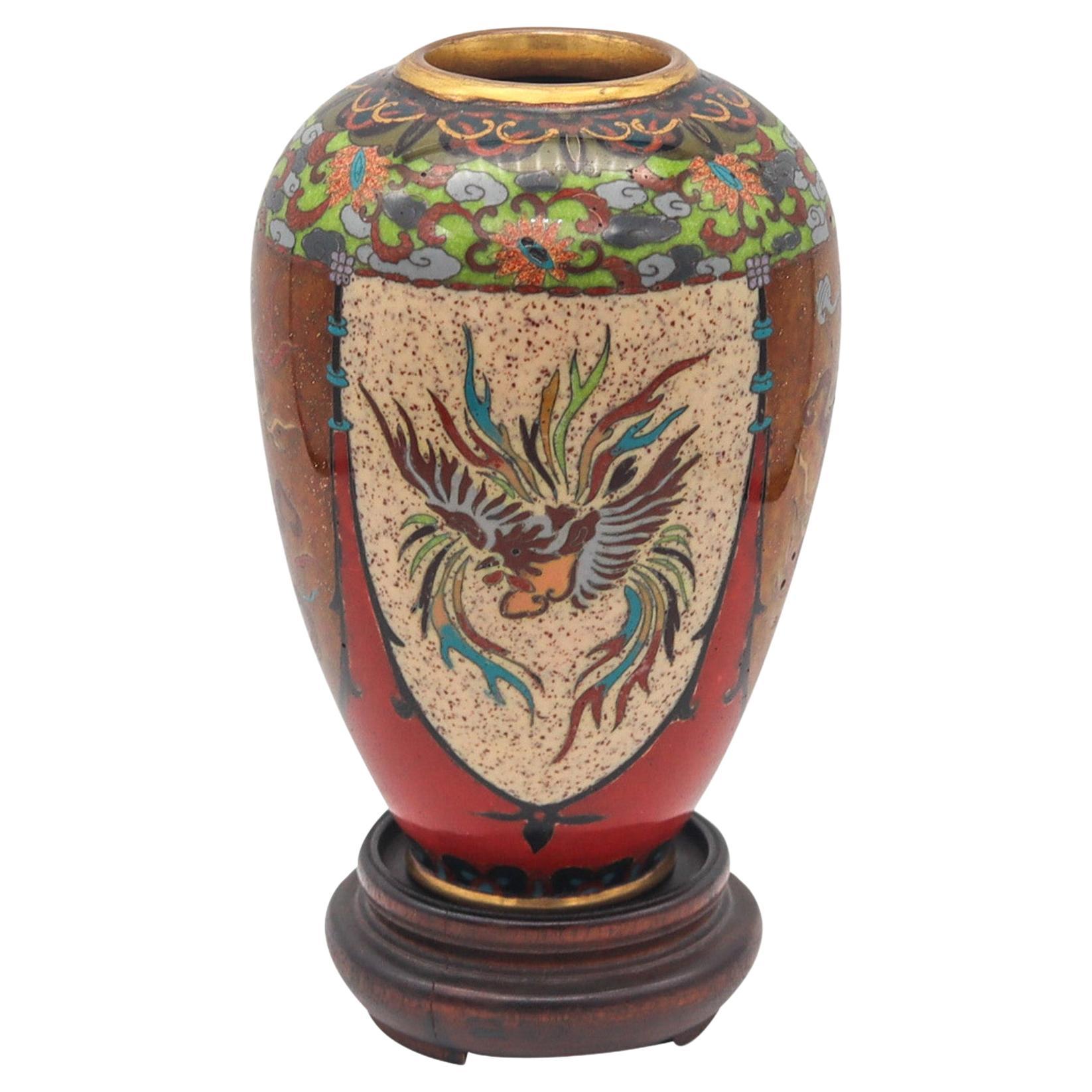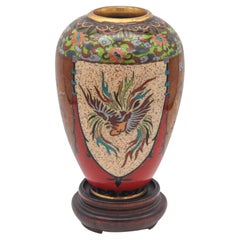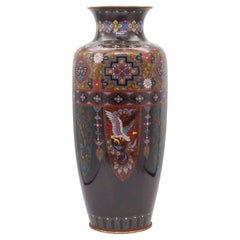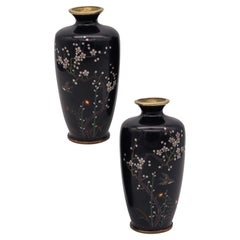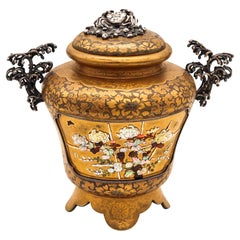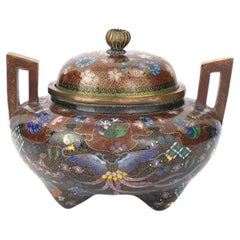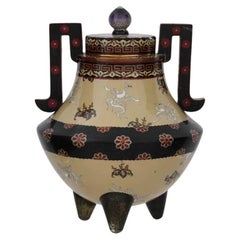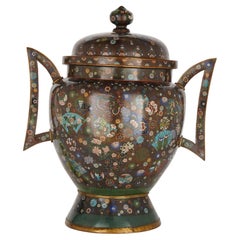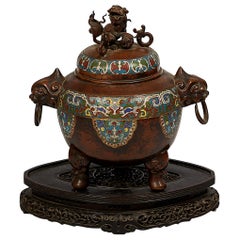Items Similar to Japan 1890 Meiji Period Bronze Koro Censer in Cloisonne Enamel with Jade Lid
Want more images or videos?
Request additional images or videos from the seller
1 of 7
Japan 1890 Meiji Period Bronze Koro Censer in Cloisonne Enamel with Jade Lid
$718.40per set
$898per set20% Off
£545.11per set
£681.38per set20% Off
€623.28per set
€779.10per set20% Off
CA$1,003.41per set
CA$1,254.26per set20% Off
A$1,115.66per set
A$1,394.57per set20% Off
CHF 582.53per set
CHF 728.17per set20% Off
MX$13,580.24per set
MX$16,975.30per set20% Off
NOK 7,432.88per set
NOK 9,291.10per set20% Off
SEK 6,964.25per set
SEK 8,705.31per set20% Off
DKK 4,651.65per set
DKK 5,814.56per set20% Off
Shipping
Retrieving quote...The 1stDibs Promise:
Authenticity Guarantee,
Money-Back Guarantee,
24-Hour Cancellation
About the Item
Japanese Koro from the Meiji Period (1868-1912).
Beautiful antique ten sides fluted koro censer, created in Japan during the Meiji period (1868-1912), circa 1890's. It was carefully crafted in solid bronze with copper wires and embellished with applications of polychromatic cloisonne enamel with silver and gold flakes, depicting organics and natural motifs such butterflies and flowers.
The lid on top is embellished with a sphere of 13 mm carved from natural green nephrite jade.
Has a total weight of 360.7 Grams and a measurements of 134 mm by 127 mm (5.25 x 5 Inches).
Meiji period, is an era of Japanese history that extended from October 23, 1868 to July 30, 1912.The Meiji era was the first half of the Empire of Japan, when the Japanese people moved from being an isolated feudal society at risk of colonization by Western powers to the new paradigm of a modern, industrialized nation state and emergent great power, influenced by Western scientific, technological, philosophical, political, legal, and aesthetic ideas. As a result of such wholesale adoption of radically different ideas, the changes to Japan were profound, and affected its social structure, internal politics, economy, military, and foreign relations. The period corresponded to the reign of Emperor Meiji. It was preceded by the Keio era and was succeeded by the Taisho era, upon the accession of Emperor Taisho.
Koro, is a Japanese censer, incense burner, perfume burner or pastille burner is a vessel made for burning incense or perfume in some solid form. They vary greatly in size, form, and material of construction, and have been in use since ancient times throughout the world. They may consist of simple earthenware bowls or fire pots to intricately carved silver or gold vessels, small tabletop objects a few centimeters tall to as many as several meters high. Many designs use openwork to allow a flow of air. In many cultures, burning incense has spiritual and religious connotations, and this influences the design and decoration of the censer.
Cloisonné is an enamelling technique in which the pattern is formed by wires soldered to the surface of the object to be decorated, which is usually made from copper, forming cells or cloisons, each of which holds a single colour of enamel paste which is then fired, and ground and polished. The champleve technique also uses an enamelling technique, but the cells are formed by carving into the surface ot the object, or in the casting. The cloisonne technique has been in use since the 12th century BC in the west, but the technique did not reach China until the 13th or 14th century. It became popular in China in the 18th century. Initially bronze or brass bodies were used, and in the 19th century copper, at which time the quality of th eitems produced began to decline. Chinese cloisonné is the best known enamel cloisonné, though the Japanese produced large quantities from the mid-19th century, of very high technical quality. In the west the cloisonne technique was revived in the mid 19th century following imports from China, and its use continued in the Art Nouveau and Art Deco periods.
Butterflies, Japan perceives the butterfly to be a 'soul of the living and the dead', as a result of the popular belief that spirits of the dead take the form of a butterfly when on their journey to the other world and eternal life. In Japanese culture, butterflies carry a number of meanings but are most closely associated with the symbolism of metamorphosis and transformation. Its curvaceous shape is commonly met with affection as a symbol of good luck, good health and prosperity.
It is in great condition, with the normal traces of use.
INVENTORY REF: D0000MNNK/.1112.
- Dimensions:Height: 5.25 in (13.34 cm)Width: 5 in (12.7 cm)Depth: 5 in (12.7 cm)
- Sold As:Set of 2
- Style:Meiji (Of the Period)
- Materials and Techniques:
- Place of Origin:
- Period:
- Date of Manufacture:1890
- Condition:Wear consistent with age and use. It is in great condition, with the normal traces of use.
- Seller Location:Miami, FL
- Reference Number:Seller: D0000MNNK/.11121stDibs: LU8303233495792
About the Seller
5.0
Gold Seller
Premium sellers maintaining a 4.3+ rating and 24-hour response times
1stDibs seller since 2023
206 sales on 1stDibs
Typical response time: 4 hours
- ShippingRetrieving quote...Shipping from: Miami, FL
- Return Policy
Authenticity Guarantee
In the unlikely event there’s an issue with an item’s authenticity, contact us within 1 year for a full refund. DetailsMoney-Back Guarantee
If your item is not as described, is damaged in transit, or does not arrive, contact us within 7 days for a full refund. Details24-Hour Cancellation
You have a 24-hour grace period in which to reconsider your purchase, with no questions asked.Vetted Professional Sellers
Our world-class sellers must adhere to strict standards for service and quality, maintaining the integrity of our listings.Price-Match Guarantee
If you find that a seller listed the same item for a lower price elsewhere, we’ll match it.Trusted Global Delivery
Our best-in-class carrier network provides specialized shipping options worldwide, including custom delivery.More From This Seller
View AllJapan 1890 Meiji Period Decorative Vase In Cloisonné Enamel With Wood Base
Located in Miami, FL
Japanese vase from the Meiji Period (1868-1912).
Beautiful antique decorative vase, created in Japan during the Meiji period (1868-1912), circa 1890s. It was carefully crafted in so...
Category
Antique 1890s Japanese Meiji Metalwork
Materials
Bronze, Enamel
$558 Sale Price / set
20% Off
JAPAN 1890-1900 Meiji Period Decorative Six-sided Vase In Cloisonné Enamel
Located in Miami, FL
Japanese vase from the Meiji Period (1868-1912).
This is a beautiful antique decorative vase created in the imperial Japan during the Meiji period (1868-1912), circa 1890s. It was c...
Category
Antique 1890s Japanese Meiji Metalwork
Materials
Gold, Bronze, Enamel
Ota Jinnoei 1890 Imperial Meiji Period Pair of Cloisonne Cabinet Vases
By Ota Jinnoei
Located in Miami, FL
Pair of cloisonne vases designed by Ota Jinnoei.
Beautiful pair of small cabinet vases, created in Japan circa 1890, during the meiji Imperial period (1868-1912). These vases has ...
Category
Antique 1890s Japanese Meiji Metalwork
Materials
Silver, Bronze, Enamel
$1,996 Sale Price / set
20% Off
Japan 1890 Meiji Shibayama Round Urn in Gilded Wood and Sterling Silver
Located in Miami, FL
Shibayama urm from the Japan meiji (1858-1912) period.
Gorgeous piece of art, created in the imperial Japan during the Meiji period, circa 1890. This is a little urn with a lid crafted in gilded wood, shibayama panels and sterling silver. Composed by a four footed round vase with two sterling silver handles in the shape of trees and the lid on top accented with the figure of a crab in sterling silver. The gilded wood is decorated with flowers, sea patterns and the imperial flower...
Category
Antique 1890s Japanese Meiji Antiquities
Materials
Multi-gemstone, Gold, Silver, Sterling Silver, Gold Leaf
$5,588 Sale Price / set
20% Off
Ando Jubei Japan 1950 Showa Period Cloisonné Enamel Green Bombe Vase
By Ando Jubei
Located in Miami, FL
Cloisonné enamel vase designed by Ando Jubei.
Beautiful piece of Japanese decorative arts, created by the Ando Jubei Company during the Showa...
Category
Vintage 1950s Japanese Showa Vases
Materials
Silver, Enamel
$1,198 Sale Price
20% Off
JAPAN 1900 Meiji Period Bronze Planter Vase With Carved Wood Base
Located in Miami, FL
Large Planter Vase from imperial Japan.
This a beautiful piece of Japanese decorative arts, created in Japan during the Meiji imperial period, circa 1900. The oversized vase can be ...
Category
Antique Early 1900s Japanese Meiji Metalwork
Materials
Bronze
You May Also Like
Large Japanese Cloisonne Enamel Koro Incense Burner with Takara-Mono
Located in Long Island City, NY
A fine quality Japanese cloisonne covered koro or incense burner, Meiji era, 1868 to 1912. The piece features cloisonne handles and cover. The exterior is decorated with various desi...
Category
Antique Late 19th Century Japanese Meiji Metalwork
Materials
Enamel
Rare Large Meiji Period Japanese Cloisonne Censer
Located in Long Island City, NY
A very fine quality large antique Japanese cloisonne tripod koro censer decorated with polychrome cloisonne enamel depicting stylized phoenix birds, paulow...
Category
Antique Late 19th Century Japanese Meiji Jars
Materials
Enamel
Large Meiji Period Cloisonne Enamel Koro
Located in London, GB
Large Meiji Period Cloisonne Enamel Koro
Japanese, late 19th Century
Height 88cm, width 76cm, depth 53cm
This superb cloisonne enamel koro was made during...
Category
Antique Late 19th Century Japanese Meiji Metalwork
Materials
Bronze, Enamel
Japanese Meiji Period Bronze and Champlevé Enameled Censer
Located in Long Island City, NY
This Japanese censer incense burner, inspired by Chinese pieces, is of spheroidal form, the bronze body with polychrome champlevé enamel work flanked b...
Category
Antique Early 1900s Japanese Meiji Metalwork
Materials
Bronze
Lovely Incense Jar Cloisonne Enamel Flower Vases Meiji Era 1868-1912
Located in Amsterdam, Noord Holland
Top quality with a beautiful scene of Flowers
Meiji era (1868-1912), 19th century.
Additional information:
Material: Bronze, Cloisonne & Metal
Region of Origin: Japan
Period: 19th c...
Category
Antique 19th Century Japanese Vases
Materials
Bronze
$1,510 Sale Price
20% Off
Monumental Meiji Period Japanese Cloisonne Enamel Jardiniere
Located in Queens, NY
A Monumental Meiji Period Japanese Cloisonne Enamel Jardiniere.
This monumental Meiji Period Japanese cloisonne enamel jardiniere is...
Category
Antique 19th Century Japanese Meiji Planters, Cachepots and Jardinières
Materials
Enamel, Copper
More Ways To Browse
1890 Japan
Japanese Art Nouveau
Antique Jade Objects
18th Century Asia Brass
Japanese Jade
Japanese Solid Silver
Art Nouveau Jade
Chinese Jade Flower
Japanese Cloisonne Bronze
Cloisonne Lidded
Large Japanese Pot
Large Jade Carving
Chinese Silver And Jade
Silver Enamel Butterfly
Chinese Pots With Lids
Wholesale Antiques
Brass Pot With Lid
Champleve Cloisonne
